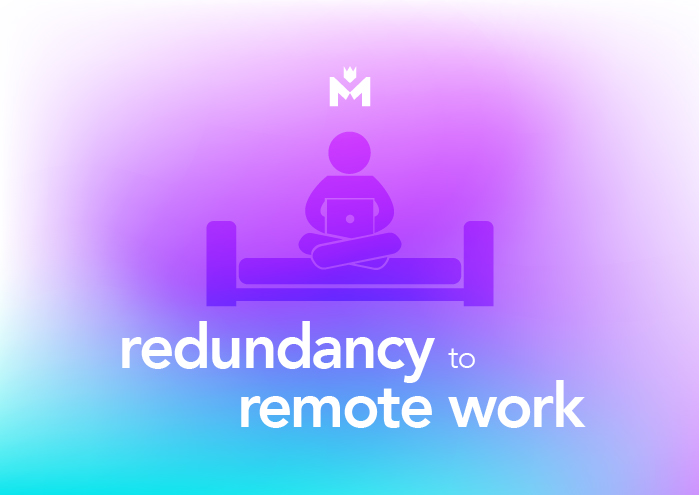COVID-19 is a mammoth challenge for employers and businesses in New Zealand right now. To find out more about what businesses can do to stay afloat and take care of staff during these crazy times, we chatted to the experts – Jaime Gallocher and Anna Long-McLean at The People Project.
We’ve condensed their valuable insights below, but if you want to hear the full conversation and get expert HR advice for free, check out the Beyond the Field podcast, on Spotify or Apple Podcasts.
How are businesses coping right now?
This has been an extremely hard time for most businesses, especially in tourism, retail and hospitality. The focus for The People Project during COVID-19 has been educating and assisting businesses around:
- Claiming the employer wage subsidy educating businesses on government benefits and accessing funding for HR Support.
- Restructuring and change management. Doing it the right way to act quickly and save money but support employees at the same time
- Managing a remote workforce now and the trends of flexible working practices going forward
- Employee wellbeing and its importance even more as we enter the next 6-12months
- Diversifying businesses and their approach to ways of working to ensure they’re less vulnerable in future.
The most immediate concern for most has been claiming the government wage subsidy and putting it to the best possible use in their business. This has been an essential lifeline at a time when overhead costs are still high but businesses income has been significantly affected and their survival is on the line.
What if my business needs to restructure?
Ensure that you consult with your staff if you are thinking of restructuring. You must propose changes and gain feedback from your people and genuinely consider them before a decision on the proposal is confirmed. This can be a tricky situation to navigate and there are lots of intricacies with each change process, how its communicated is really important.
There’s increased scrutiny on how businesses treat their staff right now, so it’s more important than ever that you go through the correct consultation process if your business needs to restructure. Ideally, redundancy is the last option, you need to consider alternative work arrangements before proposing to made someone redundant because their role is no longer needed.
Alternative arrangements could be;
- Reducing hours
- Reducing pay
- Only paying the wage subsidy until income increases again, or topping up the wage subsidy with annual leave.
You should also consider that your business may need to hire again in 6 or 12 months, which could end up costing more (time and money) than simply retaining staff in the long run, thinking about the bigger picture and what life will look like when we return to level 1 will you need to scale up quickly? It’s important not to make a knee jerk reaction when you are restructuring.
If your business genuinely can’t afford to keep staff on or you don’t have a need for their position anymore, then sometimes redundancy is the only option. In this case, it’s absolutely essential that you do everything correctly, with a focus on open communication and feedback.
Tell your employee what the business is going through, why their role is proposed to be changed or redundant, and invite them to provide feedback. If you make this a collaborative process, the employee may come up with other solutions that work better in the long run. Even if it doesn’t work out, employees will feel like they’ve been treated honestly and with respect if you involve them in the process.
HR TIP: If you need to restructure, do it with empathy and integrity. Always follow the correct processes and back up every discussion about employment in writing.
What does the future of remote and flexible work look like?
Thousands of businesses have been forced to switch to remote, flexible working arrangements overnight thanks to COVID-19. During this time businesses need to prioritise the physical and mental wellbeing of their employees, offer support and keep them engaged in their work.
Many may also need to consider how they transition back to working in the office or workspace. Others may slowly return to normal by rotating staff 50% home, 50% office bound for the first few months. Some businesses may even find that they can significantly cut overheads and still offer the same value by switching to a more flexible, remote workforce and look to make the arrangement more permanent.
Whatever you decide make sure you’re transparent and authentic with employees while managing the transition. Any changes should be made over a period of time in close consultation with staff so that they know what to expect in these times of uncertainty.
If you’re undergoing a redundancy and aren’t sure what you’re covered for – check out our blog.
About The People Project
The People Project are an Auckland-based virtual/outsourced HR provider. They help Kiwi SMEs primarily with their people needs, and projects for larger scale organisations.
They are specialists in employment relations, restructuring & change management, leadership development, and executive coaching. With experience working in corporate’s, SMEs and a business owner herself, The People Project’s director Jaime Gallocher understands how to get the best outcomes for businesses and their people needs. She leads a team of young professionals offering a modern, tailored but simple HR approach that speaks to kiwi business owners with an authentic style.
Anna Long McLean’s is a specialist in employment legislation, personal grievances, and mediation, she supports businesses navigate stressful issues as these with ease and professionalism.
Check out the People Project’s website here and get in touch with Jaime if you need a hand with your people through these crazy times.




